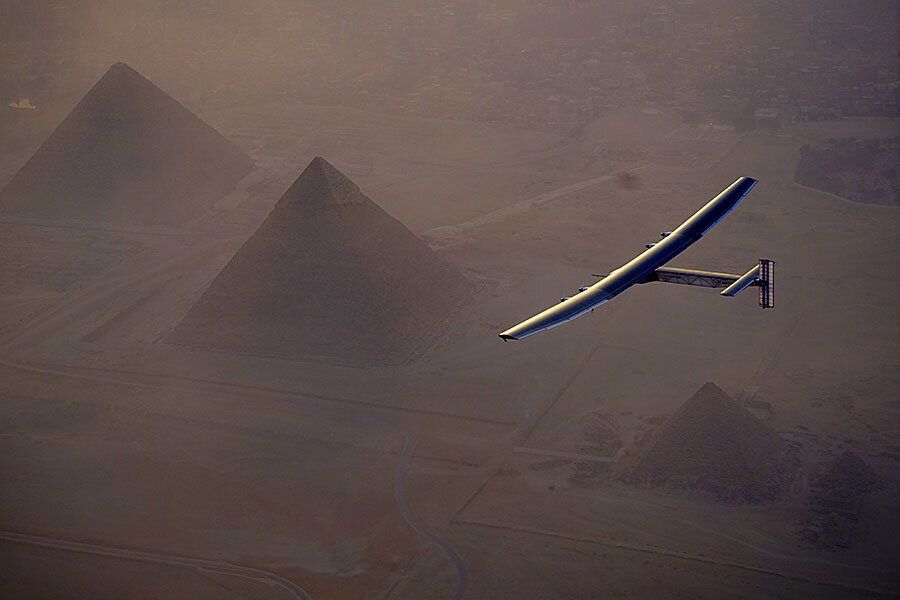Solar Impulse 2 embarks on final leg of around-the-world trip
Loading...
The Solar Impulse 2, the solar-powered airplane that began its round-the-world flight more than a year ago, took off on the final leg of its journey early Sunday.
"Just took off from Cairo to achieve the 1st round-the-world solar flight. A dream I have since 1999," pilot Bertrand Piccard tweeted once the Solar Impulse 2 was in the air.
The flight is part of a solar project, estimated to cost more than $100 million, that began in 2002 to promote a "vision that clean technologies and energy efficiency can reduce our emissions and improve our quality of life," according to the project's website.
"Clean technology is a huge opportunity that will create jobs, make profits and protect the environment," Mr. Piccard told Fox News earlier this year.
The Solar Impulse 2's voyage began last year, when the plane took off from Abu Dhabi, United Arab Emirates. As The Christian Science Monitor's Jason Thomson reported:
So the odyssey began in March 2015, with the 5,000 pound craft lifting its enormous wingspan – equivalent to that of a jumbo jet – from the sands of the United Arab Emirates, for its first short leg to neighboring Oman.
The purpose of the historic effort, as explained on the Solar Impulse website, is 'to achieve something that still seems impossible today: the first round-the-world solar flight, powered only by the sun, with no fuel or polluting emissions.'
Clean technology is at the very core of the team’s ethos, with 17,000 solar panels blanketing the wings, providing power for the plane to climb to 28,000 feet each day, then drifting down to 5,000 feet during the hours of darkness, when the sun’s energy is unavailable.
Along the way, the Solar Impulse 2 encountered some unexpected challenges when its battery cells overheated after a nonstop flight lasting five days and five nights between Japan and Hawaii. The technical difficulties grounded the plane for nine months before it was able to resume its journey.
Now, according to a tweet from the Mission Control Center, the Solar Impulse 2 will finally land in Abu Dhabi after a flight from Cairo expected to last 48 to 72 hours.
While the round-the-world flight is coming to an end, the project is not, Mr. Piccard told Reuters.
"The project is a big promotion of clean technologies around the world and the legacy of Solar Impulse is the created international community," he said.
This report contains material from Reuters.








